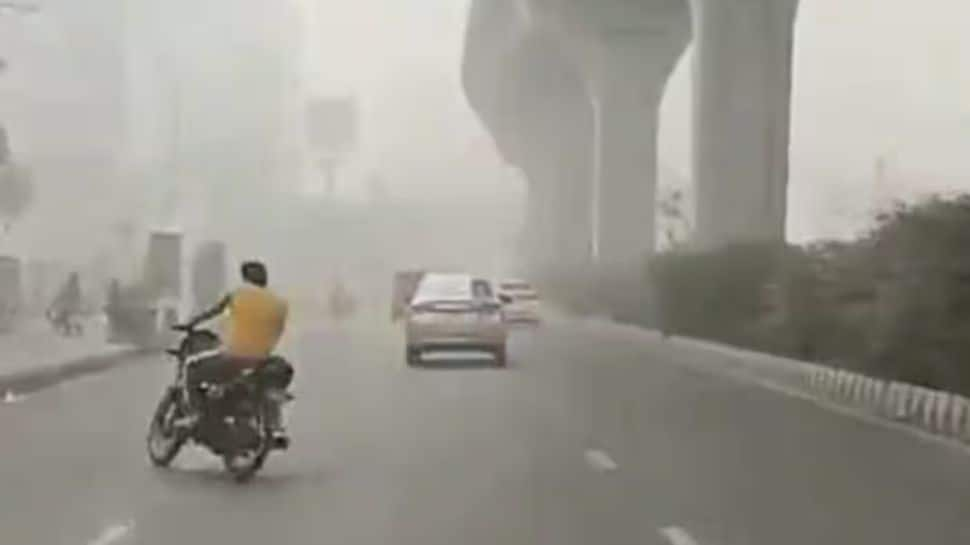 |
|
The Supreme Court of India's recent intervention highlights a critical failure in the implementation of environmental regulations aimed at combating Delhi's severe air pollution crisis. The court's sharp criticism of the Delhi government and other relevant authorities underscores the urgency of the situation and the need for immediate, effective action. The core issue revolves around the inadequate enforcement of the Graded Response Action Plan (GRAP), specifically Stage 4 restrictions, which are designed to be implemented when the Air Quality Index (AQI) reaches hazardous levels. The court's concern is not merely about the existence of the plan, but the blatant disregard for its implementation, leading to a continued deterioration of air quality and a direct threat to public health. The spike in AQI to levels exceeding 450 triggered the activation of GRAP Stage 4, mandating a ban on the entry of heavy vehicles into Delhi. However, the court's investigation reveals a significant discrepancy between the regulations and their practical application.
The Supreme Court's decision to demand CCTV footage from 13 major entry points into Delhi reveals a proactive approach to verifying the claims of the Delhi government. The court's skepticism, indicated by its assertion that it's 'very difficult' to believe the ban is fully effective, points towards a pattern of non-compliance or ineffective enforcement. The appointment of 13 lawyers to independently assess the situation at these entry points further underscores the court's determination to ascertain the truth and hold those responsible accountable. This independent investigation, tasked with submitting a report by November 25th, will provide concrete evidence to substantiate or refute the claims made by the authorities. The court's action also implies a lack of trust in the existing monitoring mechanisms and a determination to obtain verifiable data to inform further action. The suggestion to deploy additional police personnel at these entry points underscores the need for a robust and visible enforcement strategy.
Beyond the immediate issue of truck entry bans, the Supreme Court's criticism extends to the broader response to the air pollution crisis. The court's frustration over the delayed implementation of GRAP, particularly Stages 3 and 4, highlights a systemic issue of proactive measures being neglected until the situation becomes critical. The court implicitly criticizes a reactive rather than preventative approach to air quality management. The Commission for Air Quality Management (CAQM) also faces criticism for its delayed response, indicating a lack of coordination and swift action amongst responsible authorities. The court's assertion that waiting for AQI improvement before enforcing necessary measures is inappropriate underscores the need for anticipatory and preventative measures to be at the forefront of air pollution control. The emphasis on immediate action signifies the severity of the public health implications of inaction and the paramount importance of protecting citizens' right to a pollution-free environment, a constitutional right highlighted by the court.
The implications of this Supreme Court intervention are far-reaching. It signifies not only a rebuke of ineffective governance but also a reinforcement of the judiciary's role in safeguarding public health and the environment. The court's actions set a precedent for future enforcement of environmental regulations, potentially leading to stricter monitoring and accountability mechanisms. The investigation's findings will be pivotal in shaping future strategies for air pollution control in Delhi and potentially other urban centers grappling with similar challenges. The case underscores the critical need for collaboration between central and state governments, as well as relevant agencies, to effectively implement and enforce environmental regulations. The focus on transparency and accountability, exemplified by the court's demand for CCTV footage and its independent investigation, highlights the importance of data-driven decision-making and verifiable progress in addressing the air pollution crisis.
The ongoing legal challenge underscores a broader issue of environmental governance in India. The success of this intervention hinges on not just the immediate consequences for those responsible for the lapses in enforcing the GRAP but also on the long-term systemic changes that might follow. The case raises questions about resource allocation, enforcement capacity, and the effectiveness of existing regulatory frameworks. It serves as a stark reminder of the significant challenges in balancing economic development with environmental protection, and the need for robust, well-funded, and effectively implemented environmental policies to ensure public health and environmental sustainability. The outcome of this case will have significant implications for environmental law and governance, setting a precedent for future enforcement actions and potentially leading to stricter penalties for non-compliance.
Source: Air Pollution: Supreme Court Questions Delhi Govt Over Entry Of Trucks, Calls For Immediate Action
